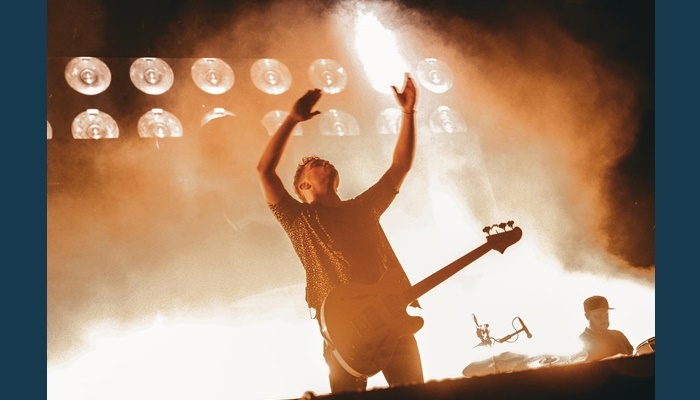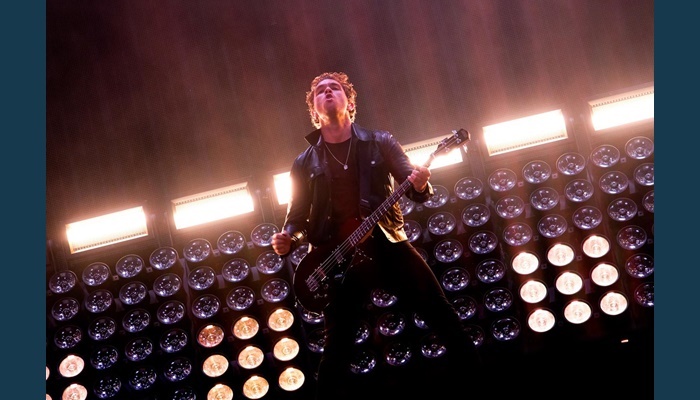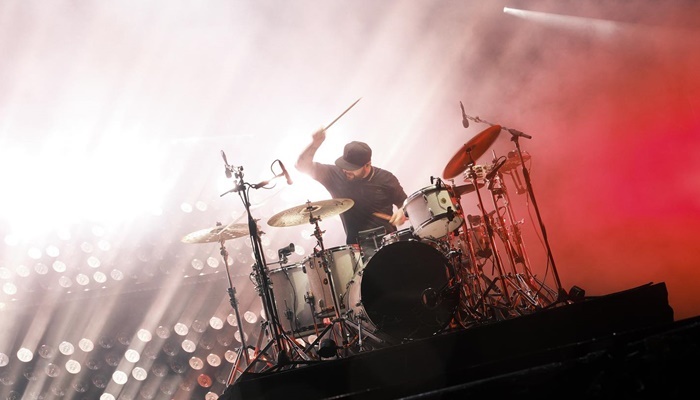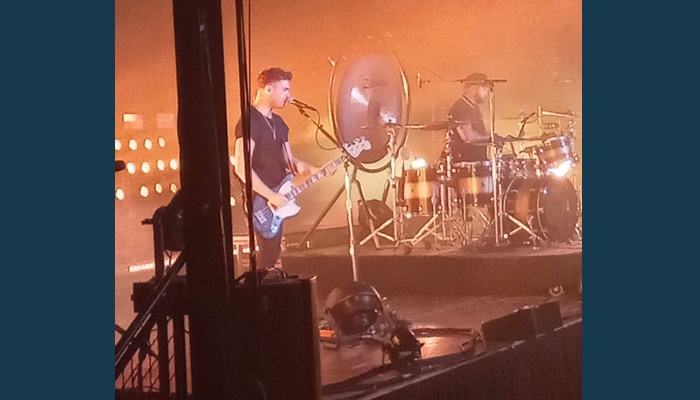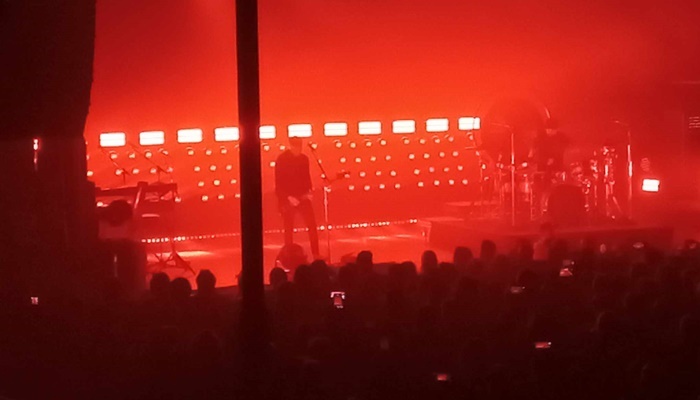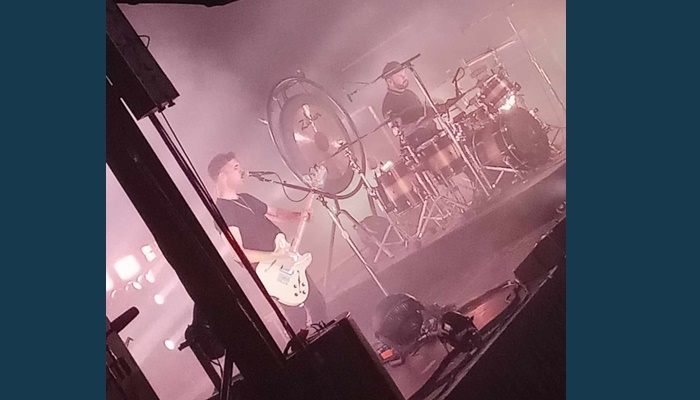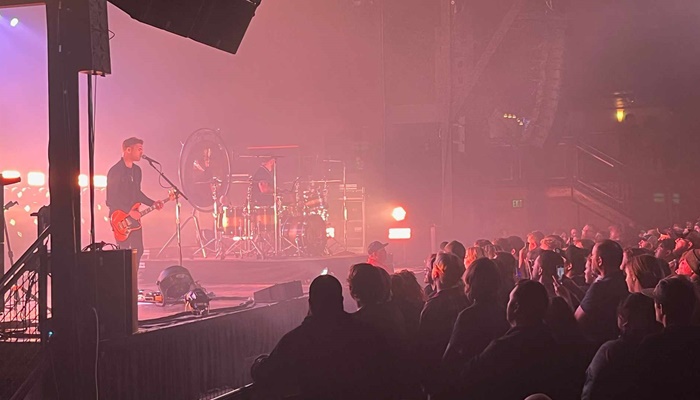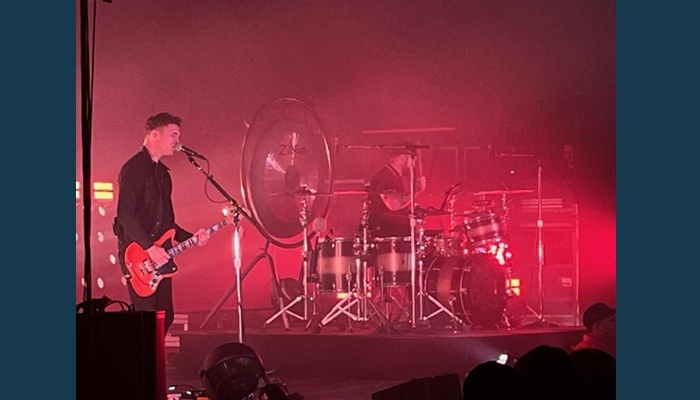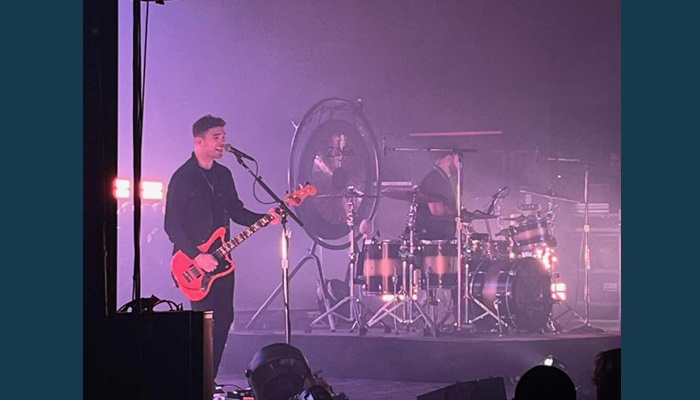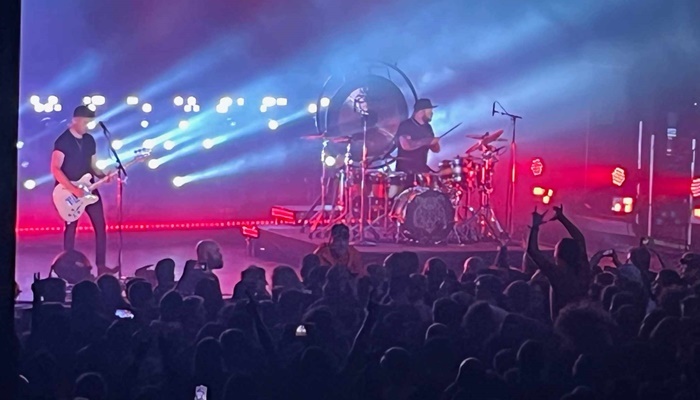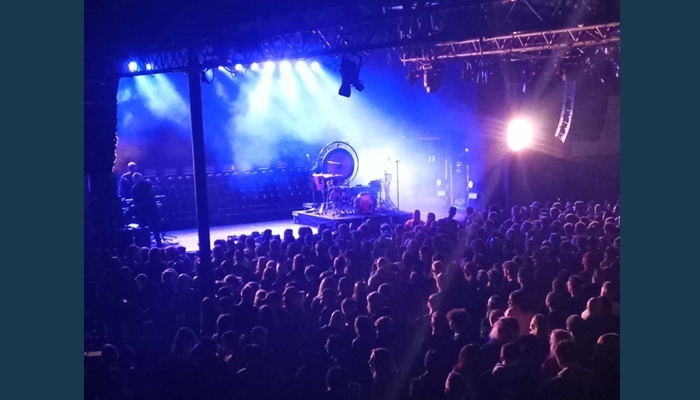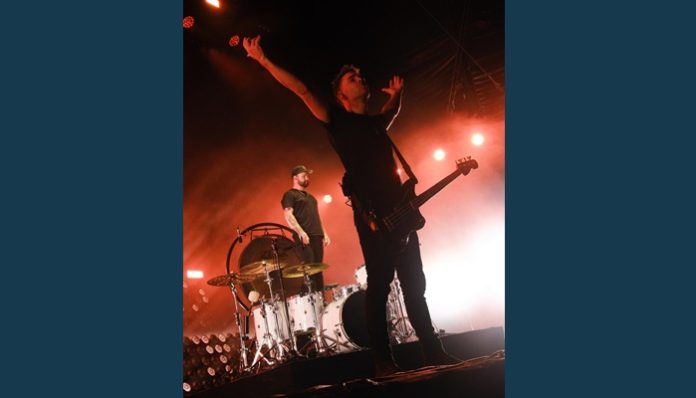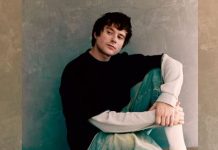SALT LAKE CITY, Utah, Dec. 1, 2023 (Gephardt Daily) — There are a number of things that surprised me about England’s Royal Blood after my husband discovered the band and showed me some of its videos.
The rock group has risen to fame thanks to its inimitable wall of sound that includes full-bodied riffs, pulsing drums and raucous live shows that make you feel like you’re somewhere in the solar system in a place named Planet Royal Blood. Along the way, the band has accumulated legions of devoted fans, earned rave reviews from fellow musicians, and, according to its website, seems to be permanently on tour.
But what I didn’t know is that firstly, Royal Blood, whose journey began in West Sussex on the south coast of England in 2011, is a duo. How is that even possible, I wondered, with the densely-layered, unique sound the pair create? The music is utterly individual, but also features exciting echoes of The White Stripes, Bastille, Muse, The Killers, Greta Van Fleet, Kings of Leon and The Pixies with some classic rock thrown in. Think Metallica meets Led Zeppelin meets ZZ Top meets AC/DC, with a little bit of pop and hip-hop in the mix as well.
But I think what surprised me most about the band was not only that it is a two-piece, but that the lead singer, Mike Kerr plays the bass, as well as being on vocals and on piano at times. Yes, that’s right, there is no electric guitar in this band. Royal Blood’s signature sound is built around Ben Thatcher, who is a monster on drums, and Kerr’s bass playing style, which sees him using various effects pedals and amps to make his instrument sound like an electric guitar and bass guitar at the same time.

Kerr and Thatcher first met when they were teenagers, and were part of a band called “Flavour Country.” Royal Blood was originally a three-piece, without Thatcher, with Kerr on bass and vocals. Following the guitarist’s departure in 2012, Kerr discovered his signature stratified sound. The band relocated to Australia, but Kerr decided to return to the U.K. in 2013, and the band continued as a two-piece with Thatcher on drums.
Royal Blood released its first self-titled LP in 2014, then the next year, went on to play its first headlining tour around the U.K., while also touring supporting the Foo Fighters in the U.S., and playing Coachella, Reading and Leeds Festivals, amongst others. Following the success of their first album, Kerr and Thatcher went into the studio in 2016 to work on their second LP, called “How Did We Get So Dark?” which was released in 2017. The same year, the group played Glastonbury Festival’s legendary Pyramid Stage. In 2018, the band embarked on its first headlining U.S. tour.
Royal Blood’s third album, the self-produced, “Typhoons,” was recorded during the pandemic in 2020, and was released the next year. The release was followed with performances at festivals and a headlining solo tour around the U.S. and Europe in 2022, after the COVID restrictions were lifted. The band opened for Muse during the European leg of the Will of the World tour in 2023 and released its newest album, “Back to the Water Below,” in September of this year, which became the band’s fourth successive No. 1 album in Britain. Kerr and Thatcher then headed back to the U.S. in September on a tour to support the new album.
At the gig at the Union Event Center Nov. 17, the band was supported by the young alternative rock trio Hot Wax, from Hastings, another town in West Sussex (coincidentally where this writer trained to be a journalist). The three-piece has supported Royal Blood both in the U.K. and during this American tour, and were well received, though I have to say it was a little hard to hear their on-stage banter over the noise of the crowd. That’s a quick fix, I’m sure, as they get used to playing larger venues.
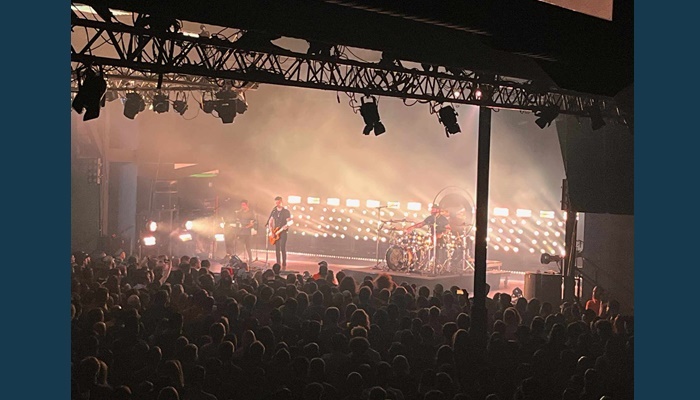
Royal Blood took the stage at around 9 p.m. to a sold-out house, opening with the newest single “Mountains at Midnight.” From beginning to end, the show was stunning. It’s very obvious the two have been playing together for a long time; the set, which was around 90 minutes long, was tight as a drum and absolutely precise with an insane amount of synergy, but it also felt spontaneous and playful and fun. Kerr and Thatcher have evidently decided that each audience member will go on an epic journey with them, and they lead us on that expedition with great finesse, as if they are conducting an orchestra.
I had to ask my musician husband if the band was using backing tracks of any sort, since its music is so rich and full. And the answer is no, it seems like a large part of Kerr’s sound comes from splitting the signal via a series of guitar and bass amps, and then combining the sound to get that unique ferocious guitar tone whilst maintaining the lower end. It’s absolutely unbelievable what Kerr achieves on the bass and his vocals are gorgeous too. He seems equally comfortable delivering hard rock anthems and alt-pop earworms; standouts from the set included “Loose Change,” “Typhoon” and my personal favorite, “Little Monster.”
On this tour, the band’s sound is rounded out on certain tracks by musician Dan Watts on additional synths, vocals, and percussion, which worked well on the poppier numbers.
And Thatcher is an absolute star; he’s often called one of the best drummers from the U.K., and possibly in the world, right now, with website MusicRadar.com writing about him: “Thatcher has proven the key pillars of rock drumming are power, groove and carefully placed notes, rather than technique or busy chops. As a result he’s become one of the U.K.’s newest rock drum heroes.”
Thatcher started playing drums at the age of six and has said he enjoyed drumming to Red Hot Chili Peppers, Nirvana, Foo Fighters, and Queens of the Stone Age.

Very wisely, Thatcher and his massive silver drum set, which includes a Zildjian gong, are placed downstage left, which serves to highlight his work still further. It was fascinating to watch Thatcher’s mastery of his drums; he appears to be trying to beat them into submission, and on top of that, he’s quite the showman. He and Kerr’s flamboyant, passionate pizzazz reminded me a lot of watching Queen or The Who live; they have the audience in the palm of their hands from start to finish, and Thatcher particularly seems to enjoy interacting with the crowd. He hypes the huge gong up no end; he encourages the audience to chant “gong, gong, gong,” before he even touches it, then has the crowd count down until he bashes the hell out of it using a special… um, gong mallet. I’m not sure of the technical name for that. I’ve also seen video from other shows where he pulls kids out of the front row to bang the gong, and in one instance, smashes it with a gong mallet that’s on fire.
Thatcher also employs another technique to get the crowd in synch; he uses his kick drum pedal at times to create a rhythm that sounds like a giant heartbeat, playing only that drum, which was very powerful. Researchers studying audience members at classical concerts have found that the bodies of listeners displayed “significant” synchronicity in their physical responses to the music. In a study, scientists observed synchronization in the movement and some physical processes — such as heart rate, breathing rate, and electrical conductivity of the skin — between audience members, and that certainly seemed to be occurring here. Thatcher then decides he’s going to go play in the mosh pit, and climbs off the stage, disappearing for a while while Kerr keeps riffing before reappearing casually and continuing the set. He also throws plenty of drumsticks out into the crowd, much to the delight of fans down front.
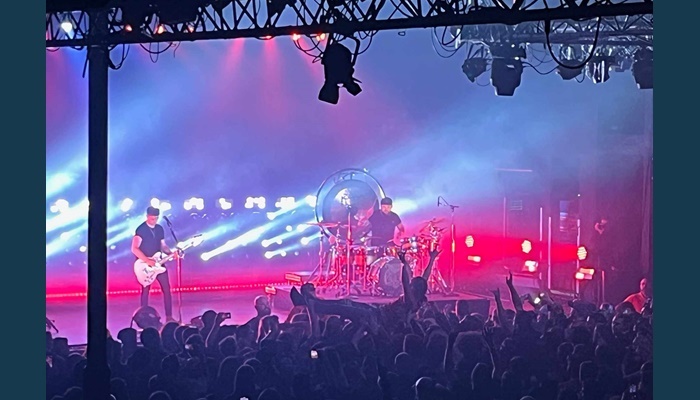
Later in the set, for the encore, Kerr and Thatcher bring out Hot Wax guitarist and vocalist Tallulah Sim-Savage to play the song “Waves” with them; it’s interesting to hear how their sound alters when they have an actual electric guitar on stage. They finish the show with their biggest hit, “Figure it Out,” which was magnificent, then closed with the band holding their respective instruments aloft triumphantly (in Thatcher’s case, his drumsticks) and basking in the enthusiastic applause and cheers that they absolutely deserved.
The production values for the show are also stunning, and almost surprisingly, quite simple. There were no video screens, and no items on stage other than Thatcher’s drums. What there was, however, was an impressive bank of lights that formed the entire backdrop. The guy sitting next to us said at one point: “There are four people in this band; the singer, the drummer, the keyboard player and the lighting guy.” That actually really does sum up the lighting perfectly; it is a character in itself in this show. The set-up consists of a row of small round lights on the floor that wrap ’round the back of the stage, with dozens of round spotlights above them, shining and pulsing onto the audience, and larger rectangular lights above them. The lighting plot is dramatic, pushing the show as a whole to an exciting level of passionate and intensity.
The sound in the Union Event Center was also flawless.
Four albums deep into its career, Royal Blood continues to demonstrate that it is a pioneering voice in modern rock music. And seeing the band in a smaller venue here in Salt Lake City was an extra treat; it felt very much like experiencing a stadium band in a much more intimate setting. Royal Blood has only announced a couple of dates in the U.S. in 2024, but they are touring the world, including Australia, New Zealand, India, Mexico, South America and Europe. If you get the opportunity, snap up your chance to see them.
More information on the band and its tour dates is available here.
